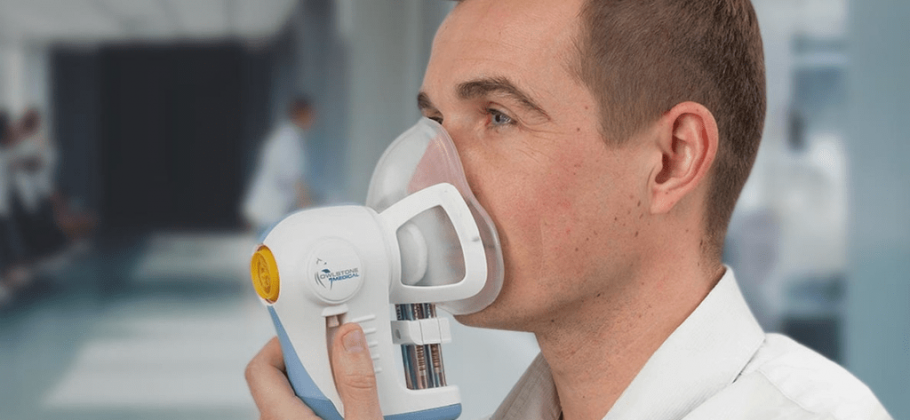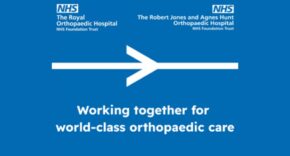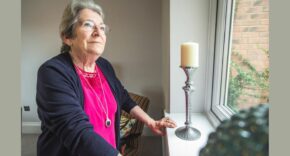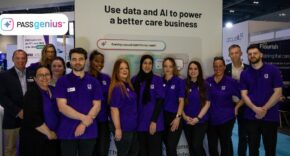Nigel Whittle, Head of Healthcare & Medical at Plextek, outlines where and how advances in health sensing and monitoring tech could help start to revolutionise our care.
We are all only too aware that early detection is absolutely key to improving the survival rates of serious illness and disease, never more so when it comes to cancer and other life-threatening conditions. But how can developments in tech and healthcare devices catapult this critical part of our wellbeing into useful reality?
Whereas popular wearable health devices, such as Fitbits and Garmins, are very effective at monitoring a range of accessible physiological parameters including heart rate, body temperature, blood pressure, sleep, movement and even oxygen saturation levels; they produce a distinct lack of actionable information. It is only when this data is combined and cross-referenced that we are able to build a more complete profile of our overall health.
This integrated approach to health monitoring and measurement can also provide more accurate alerts to anomalous physiological changes, which can potentially identify deteriorating health or the onset of a serious medical problem.
However, while this is very valuable to flag up concerns, most serious clinical diagnostic procedures require deeper analyses, such as biochemical analysis of blood chemistry, or identification of marker molecules that are predictive of disease. If we can start to access that information non-intrusively, the benefits would include monitoring of chronic diseases such as diabetes, or early detection of cancer, which could have a profound impact on disease outcomes.
Where are we now?
When it comes to general health monitoring, we are already seeing where technology is making an important contribution. For example, MonitorMe from Sanandco, developed with the help of Plextek, is a simple physiological monitoring system, which reports directly to a health provider or care body. And while the popularity of existing consumer wearables has waned, going forward we will start to see more integration with the ability to offer more effective health advisory alerts and sync up to other clinical diagnostic apps.
Sleep trackers have also suffered from the lack of actionable data, making them more of a gimmick in the eye of the consumer. The challenge here is to be able to provide meaningful and useful data, which can be integrated with other health measurement systems because, for example, monitoring sleep patterns isn’t much use unless it can be linked to other symptoms, such as blood pressure or heart rate, which could then suggest an underlying condition.
For more detailed health monitoring, there are also some exciting areas of innovation being explored. Plextek is assisting in the development of a non-invasive device for measuring fluctuating glucose levels in patients’ blood, which uses electrical field sensors. Accurate non-invasive procedures are the holy grail here and would have a profound effect on the lives of those with the disease.
Owlstone Medical has developed breath biopsy technology to obtain deep biochemical information from excretion products. But it has now refined detection devices to identify Volatile Organic Compounds from samples of our breath that may indicate underlying diseases and have the capacity to revolutionise early diagnosis.
Challenges in this field include the reliance on the detection of key biomarkers for the diagnosis and prognosis of underlying health issues. Innovative ways of measuring and monitoring these molecules through advancing technologies could well lead to improved early detection rates for a whole range of diseases, impacting significantly on survival rates.
Looking forward
As for the future, the next five to 10 years are likely to see the increasing integration of unobtrusive physiological monitoring systems, perhaps based around relatively few core integrators such as the Apple Watch or Amazon Alexa. The information could then be used to trigger alerts to potential illnesses and allow for detailed investigation. As a result, an increasing amount of diagnosis is then likely to be performed remotely, in parallel with the increased usage of medical diagnostic apps. In turn, this could go on to increase the remoteness of physicians from their patients, allowing them to reach more specialists worldwide and domestically reduce the burden on outpatient departments in hospitals, for example.
Controversially, the opportunities to obtain early information could be outweighed by an increased burden generated by the ‘worried well’ and an increased capacity for detailed health monitoring could put additional strain on the health service in terms of front end diagnosis and an increased use of medical facilities.












